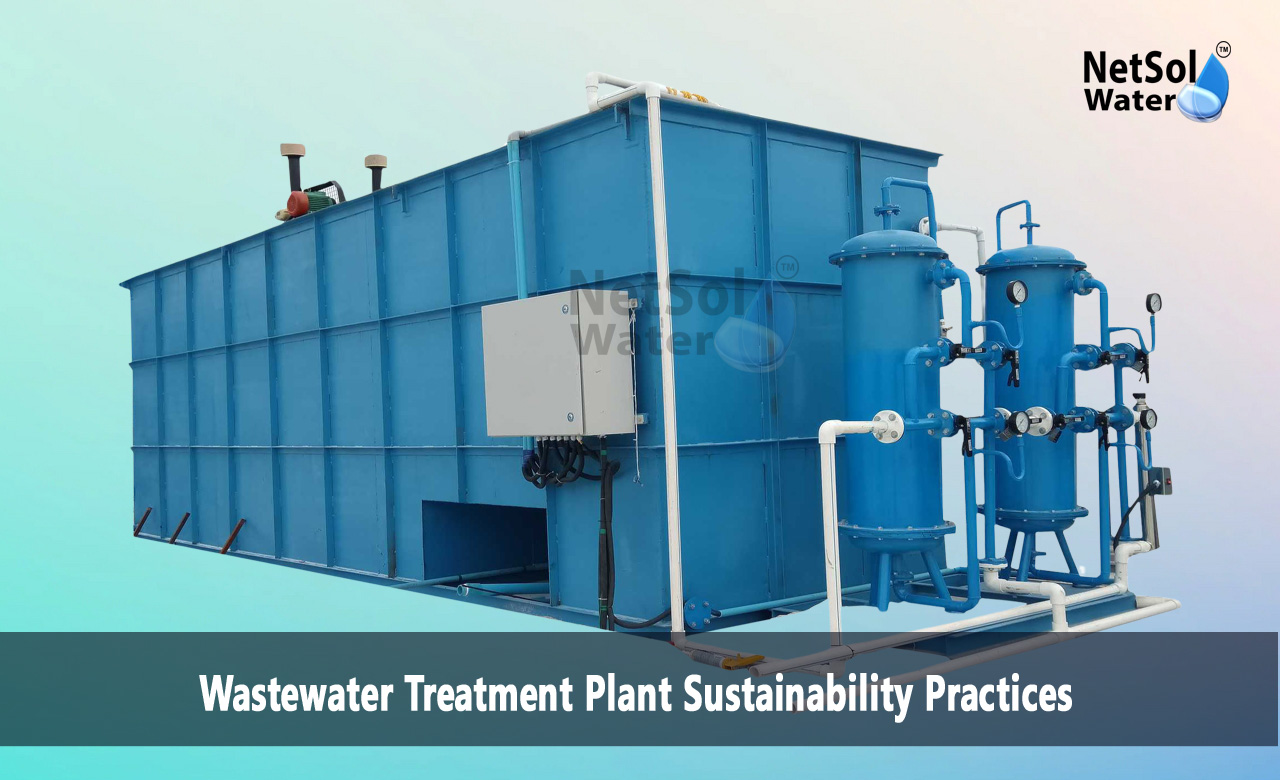Wastewater Treatment Plant Sustainability Practices
Wastewater treatment plants shape how communities use water and protect public health. Good practices lower cost and lower pollution. They also create resources that we can use again. Wastewater treatment plant sustainability practices help plants run for longer with less harm to nature and the community. Wastewater leaves homes and businesses every day. A treatment plant cleans this water so people and nature stay safe. Wastewater Treatment Plant Sustainability Practices show how plants can do this work while using less energy and creating useful materials. These practices lower operating cost and reduce harm to rivers and lands. They also help local water supplies stay steady for the future.
Energy Efficiency and Renewable Energy
Energy use ranks high in cost and in carbon output for treatment plants. Let us have a look on some ways plants cut energy use and add clean power.
Optimize Process Design
Plants gain large savings by redesigning processes to use less power. Operators tune aeration pumps and choose low energy mixers. They schedule heavy loads when electricity costs less. These steps reduce energy use and improve treatment performance.
Use Renewable Power
Plants can add solar panels and biogas generators to produce power onsite. Solar arrays fit on open land and on covered tanks. Biogas comes from digestion of sludge and feeds generators. These options lower grid use and reduce emissions.
Improve Equipment Efficiency
New motors and pumps run with less loss. Variable speed drives match power to need. Smart drives cut wear and extend life. These upgrades reduce electricity use and lower maintenance cost.
Water Reuse and Resource Recovery
Recovering water and materials turns a cost centre into a resource centre. Let us have a look on some recovery paths and how they fit into plant work.
Treat to Reuse Standards
Plants can raise effluent quality to match reuse needs for irrigation and industry. Advanced filtration and disinfection work together to meet safe limits. This step saves freshwater for other uses.
Harvest Sludge Resources
Sludge contains energy and nutrients. Digesters break down organic matter and make biogas. Dewatered biosolids can serve as soil amendment when processed safely. These moves add value and cut waste.
Capture Nutrients
Nitrogen and phosphorus cause harm if they reach lakes. Plants can capture these elements and turn them into fertilizers. This step closes a loop and reduces the need for mined nutrients.
Nutrient Removal and Circular Economy
Removing nutrients protects waterways and supports local farming. Let us have a look on some methods that remove and reuse nutrients.
Biological Nutrient Removal
Microbes convert nitrogen into harmless forms when operators manage oxygen and flow. Proper control leads to stable removal and lower chemical need. Skilled staff monitor conditions and adjust feed to keep the process steady.
Chemical Recovery Techniques
Advanced chemical methods recover phosphorus in a form that farmers can use. These methods deliver a product that meets fertilizer standards. They reduce nutrient discharge and create a marketable output.
Integration with Local Industry
Linking treatment plants with farms and factories creates new value chains. Recovered nutrients move to fields and reduce external fertilizer demand. These links strengthen local resilience.
Monitoring and Digitalization
Data helps teams make smart choices and act fast. Let us have a look on some digital steps that improve reliability and cut unforeseen cost.
Continuous Sensors and Control
Sensors track flow oxygen and ammonia in real time. Operators use this data to tune processes and avoid failures. Faster correction saves energy and prevents permit violations.
Predictive Maintenance
Digital tools predict when pumps and motors need service. Teams plan work before a failure. This approach limits downtime and saves money on emergency repairs.
Remote Operation and Analytics
Cloud based platforms let experts review plant data from anywhere. Analytics spot trends that humans might miss. Teams then make changes that boost performance and lower cost.
Low Impact Construction and Green Infrastructure
How a plant is built shapes its footprint for decades. Let us have a look on some construction and design choices that reduce harm and add benefits.
Selective Site Planning
Placing tanks and buildings to fit the land reduces earth work and habitat loss. Green buffers and native plants support local wildlife and reduce runoff. Thoughtful siting lowers long term impact.
Use of Permeable Surfaces
Permeable pavements and rain gardens slow stormwater and reduce load on the plant. These features work with treatment systems to manage wet weather and protect nearby streams.
Sustainable Materials and Lifetime Design
Choosing durable materials lowers repair needs and avoids frequent rebuilds. Designing for easy upgrades keeps the plant flexible for future needs. These choices save money in decades to come.
Conclusion
Wastewater Treatment Plant Sustainability Practices guide teams to cut energy use, lower pollution and create useful products from waste. Practical steps like improving energy use, adopting renewables, recovering water and nutrients and using digital tools deliver long term value for cities and for nature. Managers, engineers and policy makers can use these approaches to improve system resilience and to protect public health. If you want more details or a tailored plan for your plant get in touch to request a consultation and learn how Wastewater Treatment Plant Sustainability Practices can work for your community.
Contact Netsol Water at:
Phone: +91-9650608473, Email: enquiry@netsolwater.com



